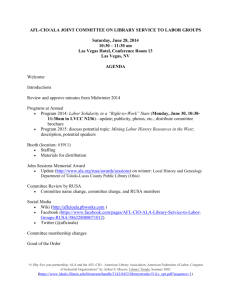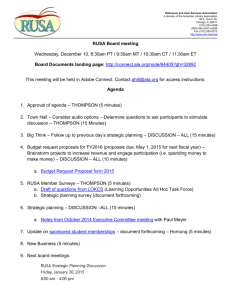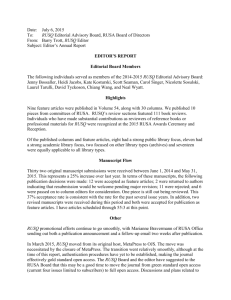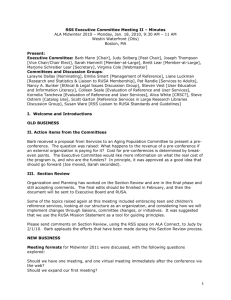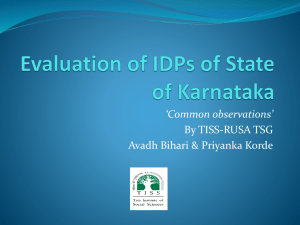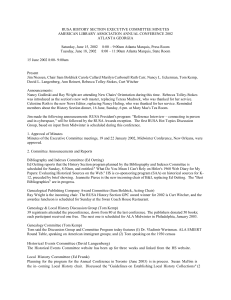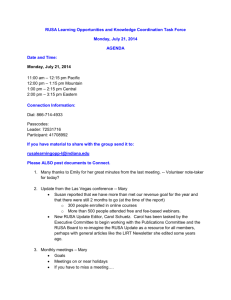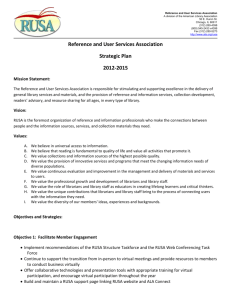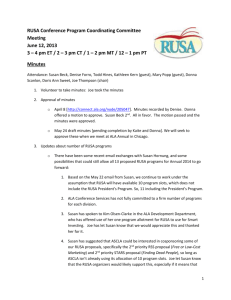RUSA Program in Tamil Nadu: Higher Education Reform
advertisement
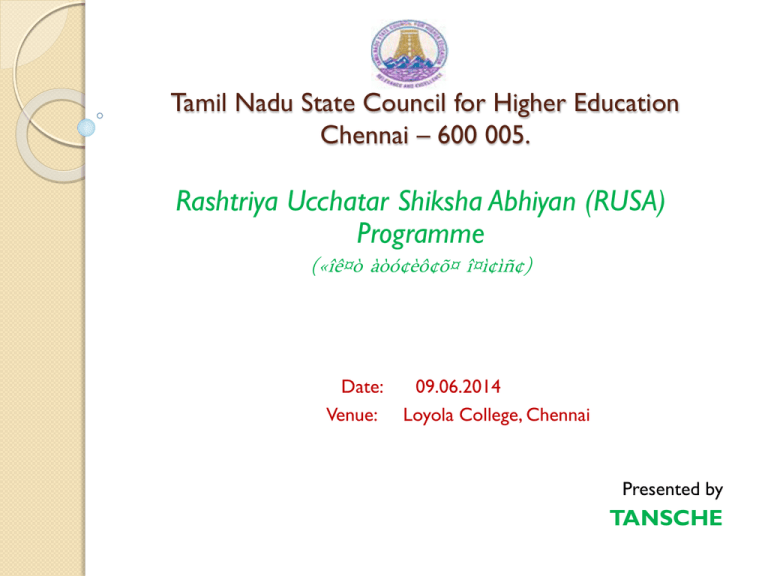
Tamil Nadu State Council for Higher Education Chennai – 600 005. Rashtriya Ucchatar Shiksha Abhiyan (RUSA) Programme («îê¤ò àòó¢èô¢õ¤ î¤ì¢ìñ¢) Date: Venue: 09.06.2014 Loyola College, Chennai Presented by TANSCHE RUSA – Need for a Change in Higher Education •to plan and coordinate Indian higher education effectively •to standardize higher education in India •to facilitate mobility of students across states •central funding could stimulate competition among states Limitations in the Existing Central Funding central funding is limited impact is insignificant state governments unaware of most of the schemes of the Centre or the UGC poorly coordinated leading to a) excessive bureaucracy b) duplication c) ineffectiveness d) low degree of monitoring e) poor quality of outcomes and value for money Rashtriya Ucchatar Shiksha Abhiyan (RUSA) Objectives access equity excellence Pre-requisites for the States to Participate in RUSA creation of state higher education councils accreditation agencies state perspective plans sharing of funds institutional governance reforms Pre-requisites for the Institutions to Participate in RUSA Institutional governance reforms Academic and examination reforms Accreditation commitments Project management teams Equity commitments Commitments on research and innovation efforts Faculty improvement Establishment of MIS Regulatory compliance Flow of Funds Grants for Institutions State Plans State Higher Education Council Fund Disbursement The funding would flow from MHRD to institutions, through State Councils of higher education. The funding to states would be made on the basis of critical appraisal of state plans of higher education. All funding under the RUSA would be norm based and future grants would be outcome dependent. Demand for resources MHRD State Universities & Colleges Ratio of Funding “Centre-State funding will be in the ratio of 90:10 for North eastern states and Jammu & Kashmir, 75:25 for Other Special Category States (Sikkim, Himachal Pradesh and Uttarakhand) and 65:35 for other states and UTs. Funding will be available to even private-aided institutes, subject to their antiquity, for permitted activities (not all) based on certain norms and parameters, in a ratio of 50:50.” - Draft RUSA, pg. 76 Governance Structure of RUSA National Level RUSA Mission Authority State level State Council for Higher Education Project Directorate Technical support group Institution level Board of governors Project monitoring unit The Duties of the State Council plan monitor evaluate academic function advise funding Method of Functioning of the State Council Institutional action plans Discussions with state holders State level budgetary + Institutional plans State higher education plans Perspective Plan Annual Plan Budget Plan Duties of Board of Governors takes all policy decisions forms, supervises, guides various committees required for project implementation ensures overall faculty development enables implementation of all academic and non academic institutional reforms ensures proper utilization of project fund and timely submission of financial management reports and utilization certificate ensures compliance with the agreed (procurement of goods, work and services) monitors progress in activities, resolves bottle necks procedure Duties of the Project Monitoring Unit procurement of goods, works and services implementation of faculty and staff development activities programme monitoring project implementation organizing efficient performance etc. conduct of monitoring and Components Relevant for Colleges Component 7 – Infrastructure Grants to Colleges Component 8 – Research, Innovation and Quality Improvement THANK YOU…..
